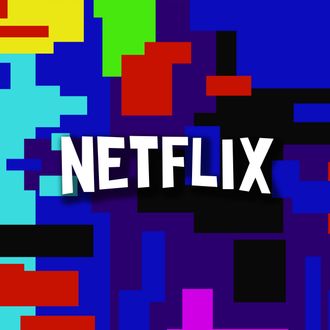
Update, April 18, 5:15 p.m.: Netflix announced in its quarterly earnings letter to shareholders that it expects to implement its “paid sharing” program — the password-sharing crackdown — in a broad rollout that includes accounts in the United States by the end of June. Read below for how that will will work for you if you have a Netflix account.
Original story from February 2 follows.
It’s finally coming. After months and months of buildup, international market testing, and no small amount of subscriber hand wringing, Netflix is preparing to put the squeeze on users who hang onto their ex’s, older sibling’s, or parents’ account credentials for years on end. But it’s also running into hiccups along the way. On January 31, the company published what it described as an erroneous update to support pages worldwide with new details on how account verification works, causing confusion and panic for anyone bumming passwords (or, as some of us do it, managing a massive spreadsheet with multiple streaming accounts shared among four to five streaming anarchists dear friends and family members).
“For a brief time on Tuesday, a help center article containing information that is only applicable to Chile, Costa Rica, and Peru went live in other countries,” said Netflix’s communications director, Kumiko Hidaka. “We have since updated it.” The mistaken update put the rules on support pages worldwide, leading users to believe that Netflix was rolling out its stricter log-in practices across the board ASAP. These include forcing users to verify their home-streaming devices every 31 days and streaming devices they travel with on seven-day intervals. If you popped open the rules for the three Latin American markets where measures were already in play, that language remained, and they’re a signal that changes are a-coming for Netflix in the U.S. and other markets, perhaps sooner than some users would prefer.
When does Netflix’s password sharing end and paid sharing begin?
On February 8, the same rules rolled out to Canada, New Zealand, Portugal, and Spain — the first expansion of its so-called “paid sharing” plan since it began testing in Chile, Costa Rica, and Peru in 2022. This time a blog post announced the changes with instructions for how to manage account access and devices, transfer profiles, and buy access for an additional user.
The U.S. and other markets will have to wait a while longer for the changes. Hidaka pointed to what the company shared on its last earnings call in January: “Later in Q1, we expect to start rolling out paid sharing more broadly.” Here’s what you can expect as those changes roll out in the coming weeks and months:
1. Giving your log-in to people outside your home is officially no bueno. This is the biggest change, the seed from which the other rules sprout and multiply. The company that once tweeted “Love is sharing a password” five years ago now specifies that if freeloaders outside your household want Netflix, they’ll have to pay for a new account. For now, the company says it won’t “automatically charge you” if someone logs in outside your home network, but I bet Netflix uses the opportunity to market the new Profile Transfer feature it rolled out last year as part of this strategy.
2. Expect to verify your devices at some point. You’ll do that with a four-digit code sent to the account owner’s email with a 15-minute expiration window. You may also have to renew the credentials every once in a while. Per the rules in Chile, Costa Rica, and Peru, users have to renew (i.e., log in into your home network) those credentials every 31 days, a.k.a. probably just after Netflix cancels its next critically acclaimed television series. Keep in mind that Netflix’s pricing plans differ on how many devices you can use simultaneously.
3. Traveling with Netflix will only slightly suck, Netflix swears. Before, watching on the road on a laptop or tablet or phone or Apple TV you unplugged and tossed in your bag on the way out was a breeze. If you were already logged in, you were good. Set it and forget it. The guidance in Chile, Costa Rica, and Peru states it will block devices if an “account is accessed persistently from another location.” To unblock it, it suggests that you “request a temporary code to give you access to Netflix” when traveling for seven consecutive days or to add a new user to the account. Hmm.
4. Netflix will be watching you more closely 😳. The company will “use information such as IP addresses, device IDs, and account activity from devices signed into the Netflix account” to sniff out offenders, it promises. To be clear, it already had all this information from the jump, feeding it back to its spiders so they can sling you algorithm-approved programming. Given the added scrutiny on IP addresses and how they interface with your account, you may also run into issues if you’re frequently using, say, a VPN to stream content from different countries. We wouldn’t know anything about that, though.
It’s worth noting that since the password-crackdown strategy was announced, Netflix has had a stronger-than-expected showing in subscriber growth, adding 7.7 million new users in its last quarterly report and boasting that it doubled the customer base of its new ad-supported tier in January. Pretty soon, though, love won’t mean “sharing a password” so much as texting the account owner for the PIN to green-light a device. We’ll know what viewers think of that next quarter.
This post has been updated throughout with comment and clarification from Netflix, as well as to add countries added to its paid sharing plan.


